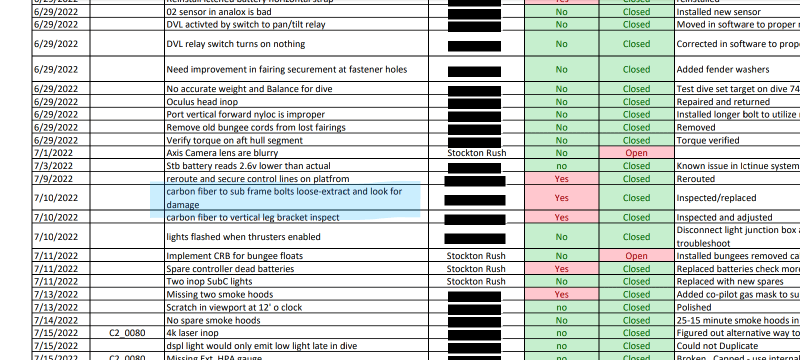Concerning this document in the Coast Guard investigation files:
Some of you appear to have figured out who is in the discussion, and I think have a grasp of part of it but the title of the document, and the redactions, and transcription errors leave me somewhat baffled.
1. This appears to be a transcription of a recording of a phone discussion between David Lochridge, Stockton Rush, and maybe Tony Nissen, and two other unknown OceanGate personnel? The title says "Interview" but that is a misnomer. The conversation is from January 2018 so presumably before OceanGate fired David. Stockton Rush pretty well just bulldozed every aspect of the report David presented, and the other attendees don't seem to support David's position in any manner or the transcription is not clear to me. ,
2. There are surprising typos in the document with homophones I would not expect in a 'court reporting transcription' - I have not seen many, so maybe this normal.
3. Any clue on is this from a phone recording? OceanGate recorded all office meetings?
4. Stockton Rush seems highly confident of the data and analysis for his belief of the safety of the hull yet says he won't provide data and analysis for review or he uses some type of obsfucation to deny access, but none of the other attendees seem to push back. Very odd review/discussion dynamic for the report David submitted and rather calmly defended.



